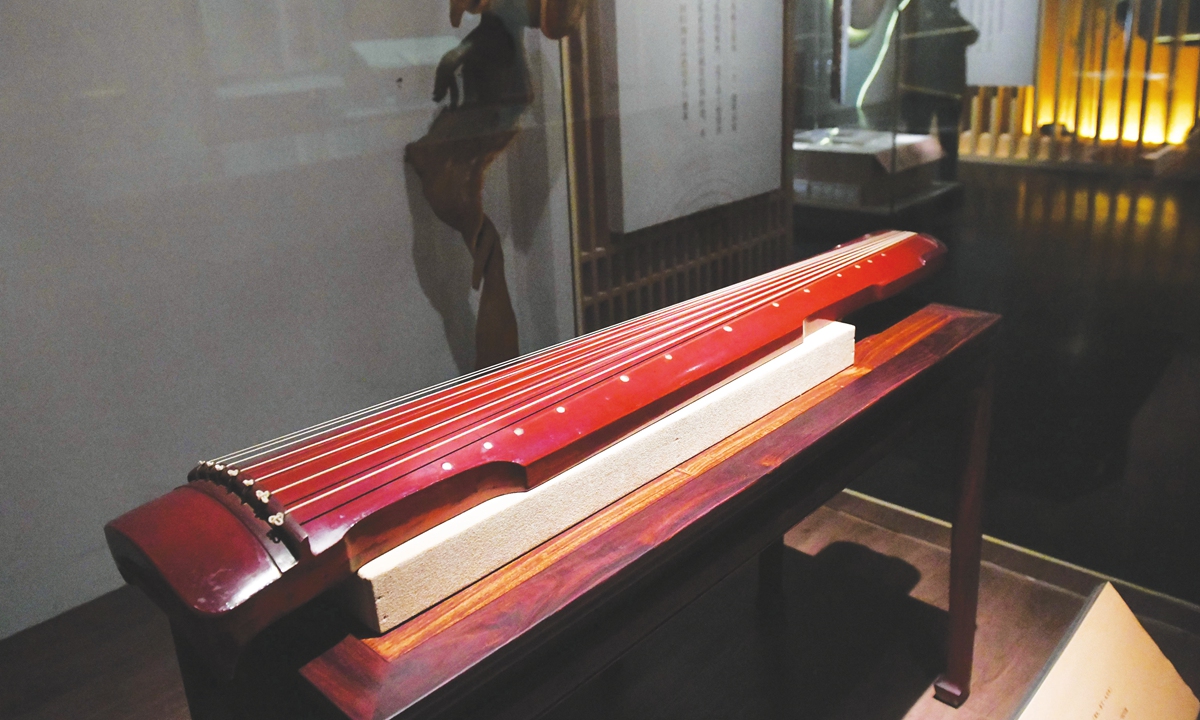
A Guqin displays at the Guangdong Museum in Guangzhou Photo: IC
Guqin - China's oldest plucked musical instrumentGuqin, a seven-stringed plucked instrument, is China's ancient and most representative musical instrument.
According to early literary descriptions corroborated by archaeological discoveries, Guqin originated from the prehistoric period and fully matured during the Han Dynasty (202BC-220AD).
Guqin was viewed as a symbol of high culture in China. In ancient China, "Guqin, the game of Go, calligraphy and painting" were the four arts scholars should master, with Guqin coming in first. Guqin was always an elite art form not intended for public performance as the point of playing the instrument was to enjoy music, cultivate one's taste and bond with friends.
There is a well-known legend about the friendship between Guqin virtuoso Yu Boya and his biggest fan Zhong Ziqi, both of whom grew to understand each other through music. Although the pair lived more than 2,500 years ago, even today Chinese people still refer to their story to describe a bosom friend.
Guqin has seven strings and 13 marked pitch positions. By attaching the strings in 10 different ways, players can generate a range of four octaves. The three basic playing techniques are known as san (open string), fan (harmonics) and an (stopped string). San is played with the right hand with strings plucked individually or in groups to produce strong and clear sounds for important notes; Fan is played with the fingers of the left hand touching the strings lightly while the right hand plucks, producing a light floating overtone; and An is plucked with the right hand when a left-hand finger presses strings firmly to create ornaments. According to tradition, it takes 20 years of training to become proficient in the instrument. The sound of Guqin is deep, remote and ethereal. More than 100 harmonics have been preserved using a unique notation system, and most of the tunes have been passed down orally from teachers to students.
Guqin techniques are divided into various schools around the country, including the Yushan, Guangling, Zhejiang, Zhucheng and Lingnan schools among others. The most famous musical works include "White Snow in Sunny Spring," "Three Stanzas of Plum Blossoms," and "High Mountain and Flowing Waters" and so on.
Due to the impact of Western music and modern media, Guqin music was in danger of becoming lost. In order to protect it, the instrument was listed as a national intangible cultural heritage in China in 2006 and was inscribed on the Representative List of the Intangible Cultural Heritage of Humanity by UNESCO in 2008.
Global Times

